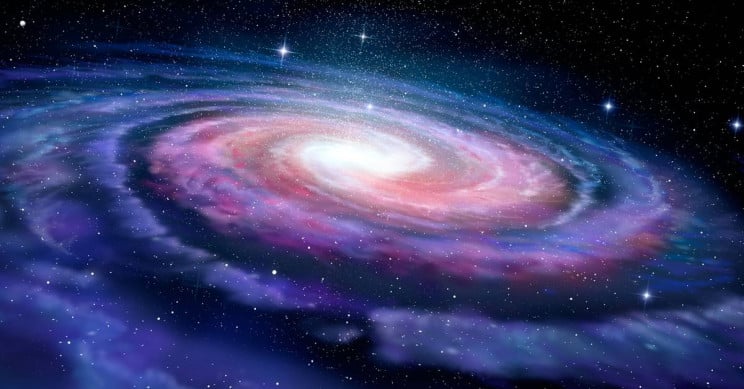A galaxy is a system of stars, stellar remnants, interstellar gas, dust, and dark matter that is gravitationally bound. The phrase comes from the Greek word galaxias, which means milky’ and refers to the Milky Way galaxy, which houses the Solar System. Galaxies range in size from dwarfs to giants, each orbiting their galaxy’s center of mass. But do you know how long a Galactic Year takes to complete?
The Sun orbits the center of the Milky Way once every 225-250 million years. The last we were in a galactic year was before, during the Jurassic Period.
What is the Milky Way?
The Milky Way is the galaxy that contains our Solar System, and the name refers to how the galaxy appears from Earth: a hazy band of light seen in the night sky formed by stars that cannot be distinguished individually with the naked eye.
The Milky Way is a translation of Latin via lactea, from the Greek o, which means milky circle. The Milky Way appears as a band from Earth because its disk-shaped structure is viewed from within. In 1610, Galileo Galilei used his telescope to resolve a band of light into individual stars. Most astronomers believed that the Milky Way contained all of the stars in the Universe until the early 1920s.
Following the Great Debate of 1920 between astronomers Harlow Shapley and Heber Curtis, Edwin Hubble’s investigations revealed that the Milky Way is only one of many galaxies. (Source: Britannica)
The Velocity of the Milky Way
While the Earth and the Sun orbit the Milky Way, the galaxy travels 600 kilometers per second through space. It’s part of the Local Group, which includes more than 54 galaxies, most dwarf galaxies.
The Milky Way and its satellites are on one side of the Local Group, while the Andromeda Galaxy and its satellites are on the other. The two clusters are separated by 0.8 megaparsecs and are traveling at a speed of 123 km/s towards one another.
The Local Group is a member of the Virgo Supercluster, which may be related to the Laniakea Supercluster. The Great Attractor is assumed to be at the center of this cluster.
The Great Attractor is a gravitational anomaly that can be seen in the motion of galaxy clusters spanning hundreds of millions of light-years across an area of space. A light-year is a distance traveled by light in a year, which is 9.46 trillion kilometers or 5.88 trillion miles.
The Great Attractor is located in the Zone of Avoidance, a visible spectrum region with so much gas and dust that humans can’t see very far. (Source: Interesting Engineering)
How Long Can the Milky Way Continue to Exist?
Our galaxy, the Milky Way, will collide with our large spiraled neighbor, Andromeda, in four billion years. Galaxies as we know them will perish.
Our solar system will outlast our galaxy. The sun will not yet be a red giant star at that point, but it will be bright enough to roast Earth’s surface. On the other hand, any remaining life forms will be treated to some pretty spectacular cosmic choreography.
A giant elliptical galaxy formed by the collision and merger of the Milky Way and Andromeda will have a new cosmic address: the solar system. (Source: National Geographic)
